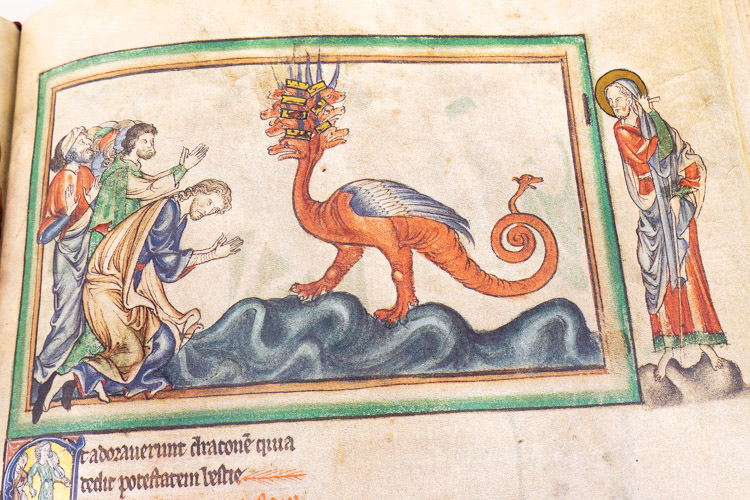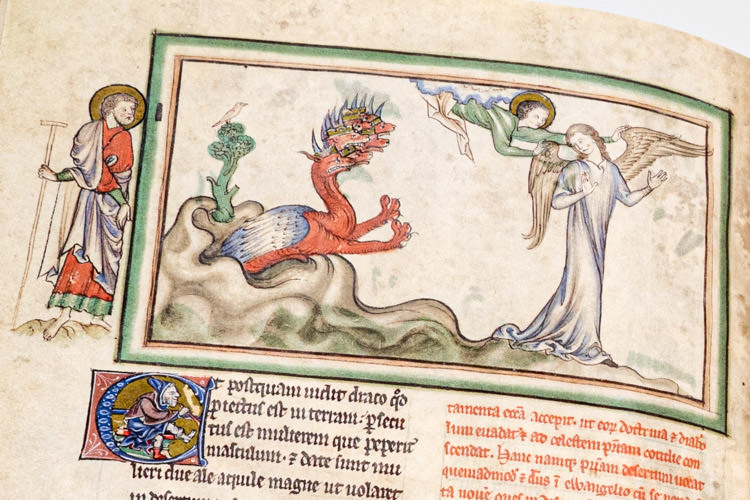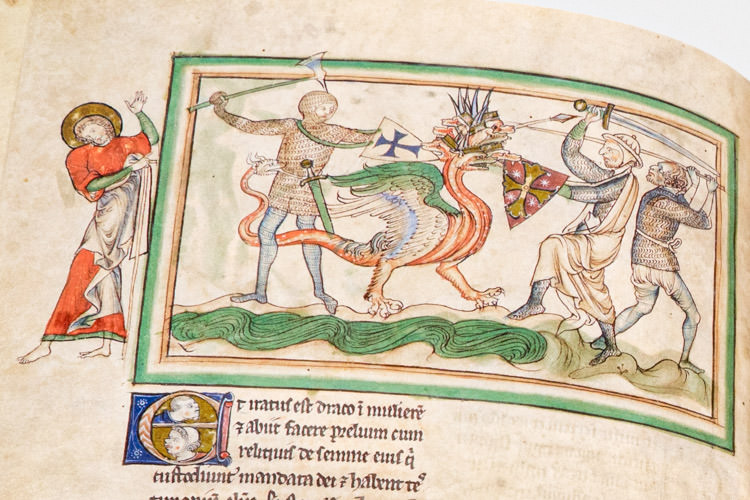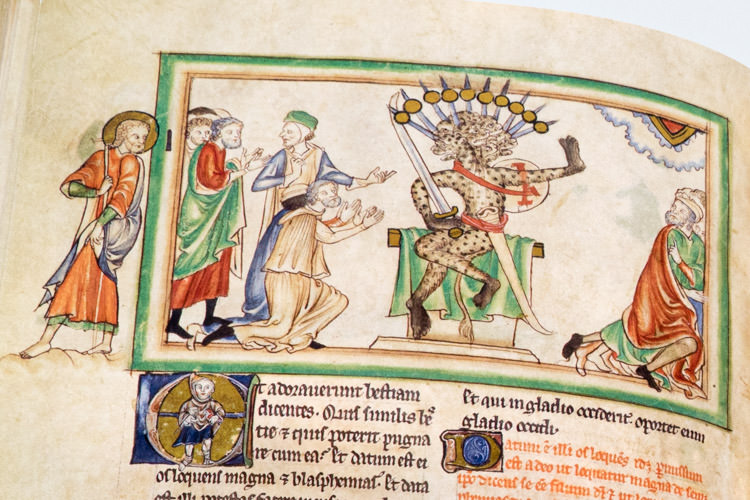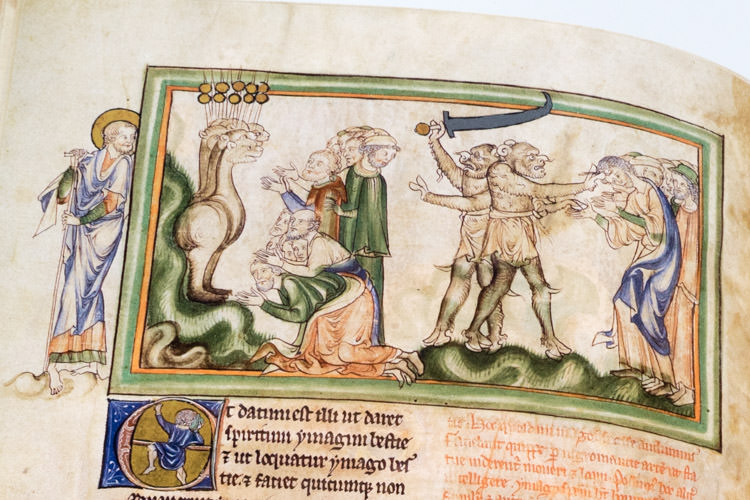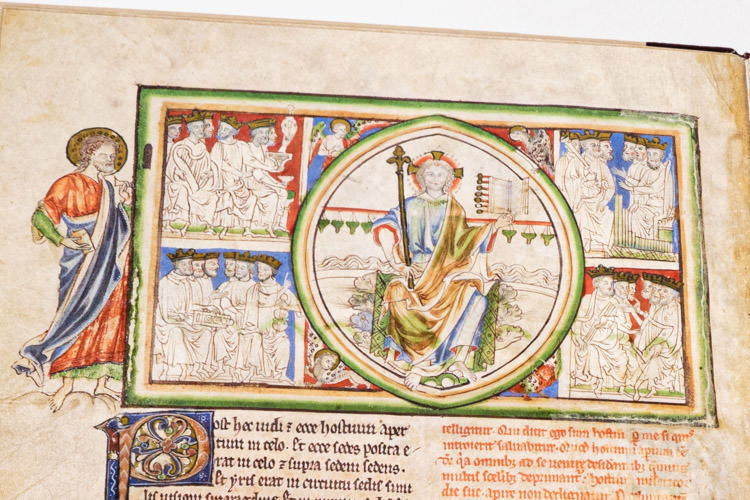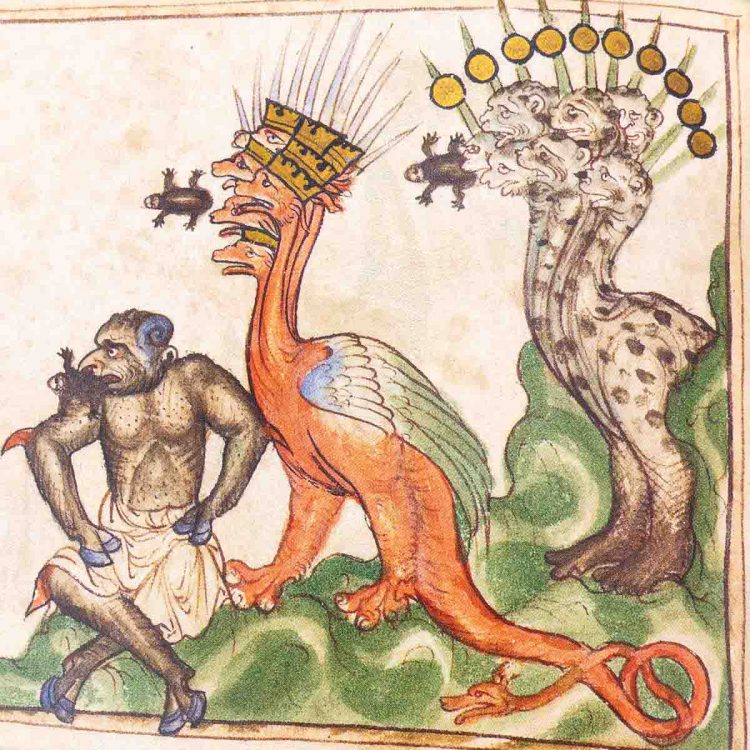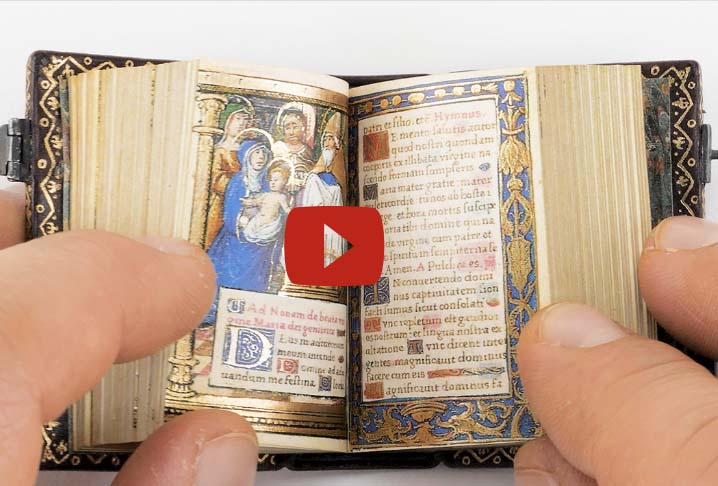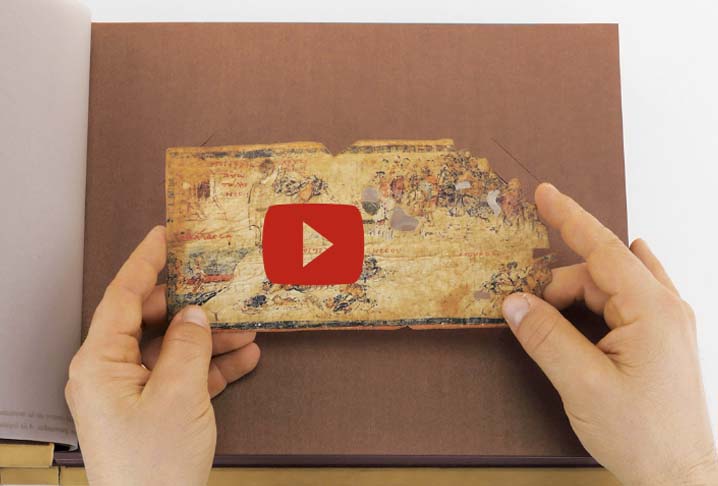In many of the 41 illustrations, John the Divine is peeking at the apocalyptic scene from an opening in the frame. We like to imagine that the artist had a lot of fun while depicting the apostle’s awe.

The Getty Apocalypse is one of the most beautiful gothic apocalypses manuscripts made in England. In the course of the 13th century, as prominent preachers predicted the end of the world, there was almost suddenly an increase in demand for illuminated manuscripts of Revelation, the culminating book of the New Testament, known as the Apocalypse of John the Divine.
A Sequence of Divine Revelations
With over 40 elegantly illustrated miniatures and more than 40 historiated initials the Getty Apocalypse is to be considered one of the finest examples of the genre.
The Getty Apocalypse, also known as the Dyson Perrins Apocalypse, was written and illuminated with 41 astounding illustrations and exemplifies an exceptional artistic achievement.
The miniatures are purposely placed in succession above the text creating a sequence of divine revelations, leading the viewer through John’s poetic, dramatic vision of the Apocalypse.
These miniatures, amongst the finest from the Middle Ages, are gracefully delineated in tinted color embellished with gold and silver leaf.
Each illustration is evidence of great artistic mastery, understanding of color, and ability to express emotion through gesture and expression.
Powerful Imagery and Entertainment-oriented Initials
Unsurprisingly, the Revelation book has always been very appealing to readers, for it tells the story of the never-ending battle between good and evil, the end of the world, and the fate of the saved and the damned.
Due to its awe-inspiring theme, it is a powerful work which requires powerful imagery, filled with dark and disturbing details.
The Dyson Perrins Apocalypse, named after a previous owner, in addition to featuring the miniatures with their corresponding passages, also provides an extract from the commentary by Berengaudus, a theologian who lived in the second half of the 11th century, interpreting and explaining John’s vision.
An important feature of the iconographic apparatus of the Getty Apocalypse is its frequent use of historiated initials – 42 in total – primarily intended as entertainment and amusement.
The artist created delightful secular scenes, such as acrobats or characters from Aesop’s fables.
The figure of John witnessing every scene enhances the sense of immediacy and urgency that characterizes the Getty Apocalypse, whose narrative is dramatic as it involves the reader in the process of revelation.
The codex exhibits an exquisite example of gothic script, namely Gothic Textura. Typical of the script are the two forms of r, sharp, straight, angular lines, and the use of abbreviations. It is uncertain how many scribes took part in the transcription of the text.
NEW WEEKLY VIDEOS
Find our more about Livre d’Heures de Marie Stuart(Württemberg, Herzogliches Haus Württemberg) on our website!
Find our more about the Ambrosian Iliad (Milan, Biblioteca Ambrosiana) on our website!


